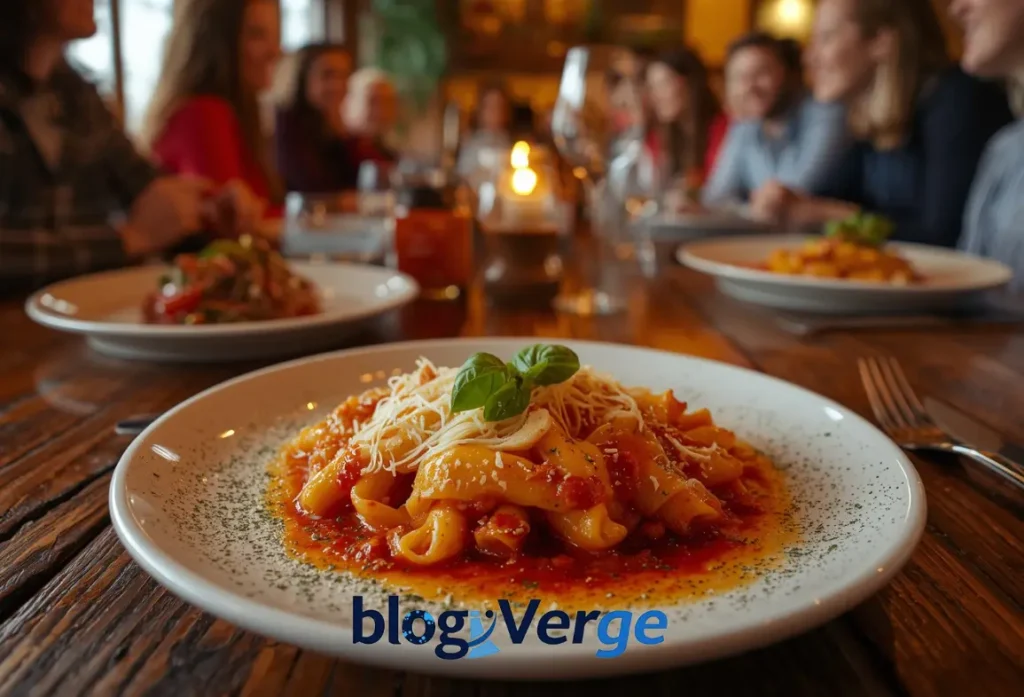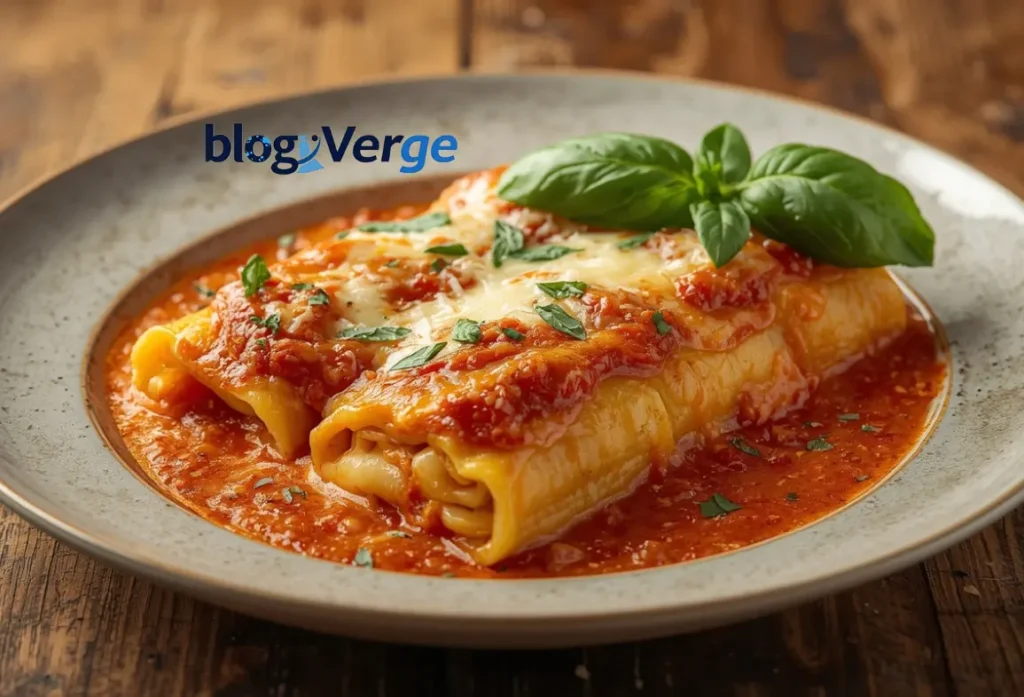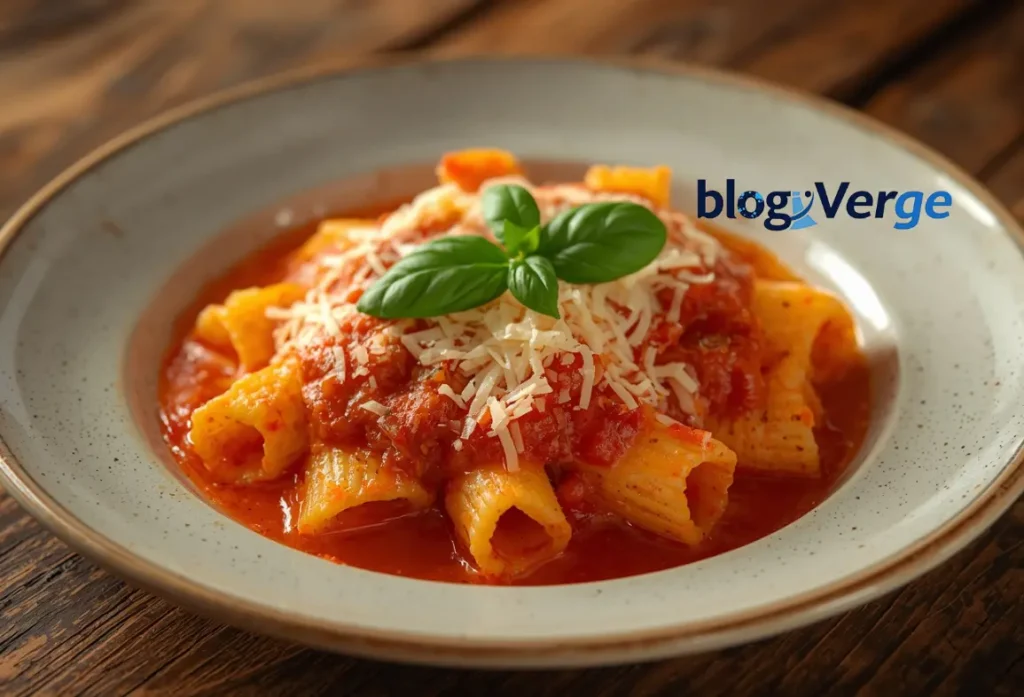Food is not only a necessity, but also a culture, tradition, and a feeling on a plate. Among the thousands of dishes available all over the world, the name of one of them that still fills the imagination of all lovers of food is that of mannacote. Mannacote embodies a unique combination of flavour, warmth, and tradition, which is rare to find in any other dish, regardless of the setting, whether it’s a family dinner, a festive gathering, or a high-end restaurant.
The interest in mannacote is not just a result of its flavours, but also due to its versatility. It may be tailored into a high-end gourmet treat, a healthy lunchtime meal or even a street food snack. Tracing back in time with the old Italian, establishing a base for the contemporary changes all over the world, Manna Cotta is the eternal character of food, adapting to culture, geography, and personal innovations.
This source provides a detailed reference on the history of mannacote, including recipes, ingredients, cultural value, nutritional value, and modern modifications of mannacote. Provided that you are an enthusiastic cook, food blogger, or curious reader, this article will give you all the information about Manicotti.
Table of Contents
What is Mannacote?
Mannae is, in essence, a dish made of pasta, a blend of cheese, herbs and in most cases, meats or vegetables, cooked to perfection in a rich sauce. Others refer to it as a reassuringly Italian-style baked pasta, while others view it as an open-ended environment for culinary innovation.
The stuffed and baked pasta is the characteristic attribute of Manicotti. The ingredients are added to cylindrical pasta or giant shells and combined with a sauce (either a tomato-based sauce, a creamy sauce, or an original fusion sauce) and baked with melted cheese on top. The outcome is a creamy, savoury, and incredibly satisfying dish.
And above its design, Manicotti is allegorical. It represents comfort, family traditions and the pleasure of communing. It has stood the time not only due to its taste, but also due to the experience it brings to dining.
The Origins of Mannacote

Italian Culinary Roots
Mannacote is rooted in the excellent cuisine of Italy. Pasta has been a central element of Italian cuisine for centuries, and stuffed pasta, including cannelloni and manicotti, has been enjoyed since the Renaissance era. Food historians suggest that manicotti was also an invention of peasant cuisine, as homemakers filled the tubes of pasta with leftover vegetables, cheese, and herbs and baked the manicotti in the oven to create a tasty family dinner.
Gradually, this dish spread, especially to southern Italy, where local cheeses, fresh herbs and tomato sauces were available. Later, Italian immigrants brought it to North America and Europe, where it evolved into the manacote that we know today.
Global Spread
Manna cotta was introduced in the world as Italian cuisine gained popularity around the globe. Each culture adapted it:
- In America, the meat-filled ones, including ground beef and additional cheese, became standard.
- French-made béchamel bases to take the place of the tomato bases.
- Mannacote gained popularity in Asia due to its fusion flavours, which feature soy-based sauces and spices.
This universal flexibility was the reason why Mannacote remained topical for centuries.
Essential Ingredients of Mannacote
The simplicity and the flexibility of Manicotti are what make it so special. Although the most essential ingredients are the same, the variations are different in their experience.
The Pasta Base
Large pasta tubes, which are cylindrical in shape, are traditionally used. But in home kitchens, one could use substitutes such as:
- Jumbo shells
- Cannelloni tubes
- Freshly rolled pasta sheets
- Can all serve as the foundation.
The Filling
This is where creativity shines:
- Classic Cheese Mix: Ricotta, mozzarella, and parmesan.
- Vegetarian: Spinach, mushrooms, zucchini, or roasted peppers.
- Meat Lovers: Ground beef, sausage, or shredded chicken.
- Vegan: Cashew cheese, lentils, and nutritional yeast.
The Sauce
No mannequin is complete without a rich sauce:
- Marinara sauce for tangy freshness.
- Béchamel sauce for creamy luxury.
- Pesto for a herby punch.
- Fusion sauces (such as spicy tomato curry and miso glaze) for experimental chefs.
The Toppings
- Grated parmesan or pecorino for salty sharpness.
- Mozzarella for melting and stretching.
- Bread crumbs for texture.
- Fresh herbs for aroma.
How to Cook Mannacote: Step-by-Step Guide
Cooking manioc is an art. Here is a detailed guide:
Step 1: Prepare the Pasta
- Boil pasta tubes or shells until al dente.
- Drain and let them cool slightly to make stuffing easier.
Step 2: Make the Filling
- Combine ricotta cheese, spinach, herbs, and seasoning for a classic vegetarian version.
- For meat versions, cook ground beef or sausage with onions and garlic before mixing with cheese.
Step 3: Prepare the Sauce
- For tomato sauce, sauté onions and garlic, add crushed tomatoes, herbs, and simmer.
- For a creamy sauce, melt the butter, add the flour, then the milk, and season with a béchamel sauce.
Step 4: Stuff the Pasta
- Use a piping bag or a spoon to fill the pasta tubes with the mixture gently.
Step 5: Assemble
- Spread the sauce at the bottom of a baking dish.
- Place stuffed pasta on top.
- Cover with more sauce and sprinkle cheese.
Step 6: Bake
- Bake at 180°C (350°F) for 30–40 minutes until golden and bubbling.
Step 7: Rest and Serve
- Let it rest for 10 minutes before serving to allow the flavours to develop.
Recipe Variations of Mannacote
One reason for the dish’s popularity is its adaptability. Let’s explore the most famous variations:
1. Classic Italian Mannacote
- Ricotta, mozzarella, parmesan, and spinach filling.
- Marinara sauce base.
- Fresh basil garnish.
2. Meat Lover’s Mannacote
- Ground beef or sausage filling.
- Tomato and béchamel sauce blend.
- Extra mozzarella topping.
3. Vegetarian Garden Mannacote
- Spinach, zucchini, mushrooms, and bell peppers.
- Light tomato basil sauce.
- Vegan cheese topping.
4. Vegan Mannacote
- Cashew ricotta, lentils, and spinach filling.
- Dairy-free béchamel sauce.
- Nutritional yeast as a topping.
5. Gourmet Truffle Mannacote
- Filling with ricotta, parmesan, and truffle oil.
- Cream sauce with white wine.
- Garnished with microgreens.
6. Spicy Fusion Mannacote
- Filling with minced chicken and chilli flakes.
- Sauce infused with curry spices.
- Garnished with coriander and lime.
Nutritional Value of Mannacote

Although indulgent, Mannacote can be tailored to accommodate health-conscious diets.
Macronutrients
- Carbohydrates: Pasta provides steady energy.
- Proteins: Cheese and meat are rich in protein.
- Fats: Vary depending on the type of cheese and sauce.
Micronutrients
- Calcium: High in cheese.
- Iron: From spinach and meat fillings.
- Vitamins: Fresh vegetables provide antioxidants.
Healthy Tips
- Use whole-grain pasta.
- Replace heavy cream with Greek yoghurt.
- Add extra vegetables for fibre.
- Limit cheese to keep calories in check.
Cultural Significance of Mannacote

Food has always been a reflection of culture, and Manicotti is no exception to this truth. In traditional Italian homes, it is not just a recipe but a symbol of family bonding, often prepared for Sunday gatherings where generations sit together at the same table. In the United States, Manicotti has gradually become part of festive traditions, finding its way into Thanksgiving spreads, Christmas feasts, and even casual family reunions. Moving across continents, chefs in Asia have adopted the dish and infused it with their own culinary identity by experimenting with local spices and flavours, transforming it into a staple of fusion-style menus.
What makes Manicotti culturally significant is its remarkable ability to adapt without losing its comforting essence. Whether served in its classic Italian form or with a global twist, it consistently reflects the universal love for hearty, soulful meals that bring people closer together.
Mannacote in Global Food Culture
The beauty of Manicotti lies in its ability to transcend borders and cater to diverse tastes. Each culture has added its flair while respecting the essence of this comforting baked pasta dish.
| Region | Variation of Mannacote | Unique Ingredients Used |
| Italy | Traditional ricotta-spinach with marinara | Ricotta, parmesan, tomato, basil |
| United States | Hearty meat-based, extra cheese, often served on holidays | Beef, mozzarella, marinara |
| France | Richer and creamier with béchamel sauce | Gruyere, mushrooms, béchamel |
| Middle East | Spiced with lamb and pine nuts | Lamb, cinnamon, cumin, pine nuts |
| India | Infused with paneer and masala sauce | Paneer, curry spices, coriander |
| Japan | Seafood twist with soy-based sauce | Crab, shrimp, soy sauce, green onions |
| Mexico | Spicy version with chilies and queso fresco | Jalapeños, queso fresco, cilantro |
Street Food and Modern Trends in Mannacote
Today, Mannacote is not limited to restaurants. It has entered the world of street food and fast casual dining, where convenience meets creativity.
| Street Version | Description | Why It’s Popular |
| Mannacote Wraps | Rolled pasta sheets stuffed and grilled | Easy to eat on the go |
| Mini Manicotti Cups | Bite-sized portions baked in muffin trays | Perfect for parties & snacks |
| Air-Fried Mannacote | Crispy texture without heavy oil | Appeals to health-conscious eaters |
| Manicotti Bowls | Deconstructed style in take-away bowls | Quick & portable for busy people |
Expert Tips for Perfecting Mannacote
Chefs emphasize technique as much as they do ingredients.
| Tip | Benefit |
| Slightly undercook pasta | Prevents overcooking in the oven |
| Use multiple cheeses | Creates layers of flavor and texture |
| Rest after baking | Helps flavors settle and cheese firm up |
| Fresh herbs over dried | Boosts aroma and freshness |
| Don’t skimp on sauce | Keeps pasta moist and prevents dryness |
Gourmet Pairings and Plating
In high-end restaurants, manna cotta is often elevated beyond its traditional homestyle appeal and transformed into an authentic gourmet experience. Chefs carefully select wine pairings to complement the richness of the dish: a robust Chianti is typically recommended for meat-based versions, as its deep, earthy notes balance the savoury flavours of beef or lamb, while a crisp Chardonnay works beautifully with vegetarian options, enhancing the freshness of spinach, zucchini, or ricotta fillings.
Equally important are the side dishes that round out the meal. Classic garlic bread adds a crunchy, buttery contrast to the soft pasta, while roasted vegetables bring natural sweetness and depth. For a lighter touch, a fresh arugula salad provides peppery freshness, cleansing the palate and ensuring the meal feels balanced.
Plating, too, plays a vital role in creating a gourmet experience. Instead of large family-style portions, restaurants often serve manchego in individual cast-iron skillets, which retain heat and give a rustic charm. To finish, the dish may be enhanced with a drizzle of basil pesto for added aroma and colour, while delicate microgreens are used as a garnish, adding both elegance and a touch of freshness.
The Future of Mannacote
The future of Mannacote is closely tied to the current emerging food trends and changing lifestyles. Both chefs and home cooks are experimenting with new methods that make the dish appealing to multiple generations.
- Vegan/Plant-Based Emphasis: As more people adopt plant-based diets, Mannacote is being transformed with zero-dairy alternatives, including cashew cheese, almond ricotta, and filling lentils, among others. These alternatives not only replicate the texture of the originals but also appeal to health-conscious consumers.
- Global Fusion: Culinary borders are becoming increasingly permeable, so innovative types of Manchurian cuisine, such as kimchi-stuffed Manchurian in Asia or Manchurian cuisine inspired by Tex-Mex in the U.S., are becoming common. These audacious turns enable the dish to embody the local flavor while also celebrating its Italian heritage.
- Healthier Alternatives: Health-conscious diners are seeking guilt-free comfort food. Innovations like gluten-free pasta tubes, light pasta sauces, and even air-fried manioc offer a more nutritious alternative that maintains the same flavor.
- Convenience Food: In the modern-day fast world, convenience is a priority. This has made the frozen Manacote packs popular, as they enable families to prepare and take home the dish with minimal preparation while still retaining the traditional flavor.
Ultimately, mannacote will always remain a timeless comfort food that people turn to for warmth, satisfaction, and tradition. Its true strength lies in its adaptability, which allows it to evolve with changing tastes and food trends. In the future, we can expect mannacote to appear not only on fine dining menus, where chefs elevate it with gourmet fillings and artistic plating, but also in the simplicity of weeknight family meals, where quick and convenient versions make it accessible to everyone. This balance of tradition and innovation ensures its lasting place in global cuisine.
Conclusion
From its humble Italian roots to its numerous global adaptations, manacote has evolved into much more than just a simple dish—it has become a culinary canvas where tradition and innovation meet in harmony. What started as a classic comfort food made with ricotta, marinara, and tender pasta has evolved into an international favourite that embodies the signature flavours of many cultures.
Whether you prepare mannacone in its timeless Italian style or experiment with bold fusion twists—adding spices, regional cheeses, or even plant-based fillings—it continues to deliver the same promise: warmth, comfort, and joy in every bite. Its versatility makes it suitable for family dinners, festive gatherings, gourmet restaurant menus, and even quick street food versions.
Ultimately, Mannacote is more than food; it is an experience that connects people, celebrates creativity, and showcases the universal love for hearty, soul-satisfying meals. No matter where you enjoy it, one thing is sure—Manicotti will always remain a dish that brings happiness to the table.
It has evolved into a food that is equally at home in gourmet restaurants, street stalls, and family kitchens. The journey of Manicotti reflects the journey of food itself: timeless, adaptable, and always delicious.
FAQs
Q1. What is Mannacote made of?
Ans: Stuffed pasta (usually tubes or shells) filled with cheese, vegetables, or meat, baked with sauce and toppings.
Q2. Can Mannacote be vegetarian?
Ans: Yes, fillings like spinach, mushrooms, and zucchini make excellent vegetarian versions.
Q3. What’s the difference between manacote and lasagna?
Ans: Lasagna is layered, while manicotti is stuffed pasta baked in sauce.
Q4. Can I make Mannacote vegan?
Ans: Yes, use cashew cheese, lentils, or plant-based fillings with dairy-free sauces.
Q5. How long does it take to bake?
Ans: Around 30–40 minutes in the oven at 180°C (350°F).
Q6. Is Mannacote healthy?
Ans: It can be, especially if you use whole-grain pasta, light cheese, and extra vegetables.
Q7. Can Mannacote be frozen?
Ans: Yes, you can assemble and freeze it for baking later.
Q8. What side dishes pair best with mannacote?
Ans: Garlic bread, salads, or roasted vegetables complement it perfectly.
Q9. Does Mannacote fit into the global fusion cooking trend?
Ans: Absolutely—it blends well with spices, sauces, and techniques from many cuisines.

